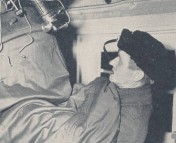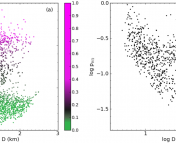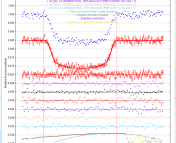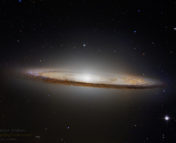Title: Tidally locked rotation of the dwarf planet (136199) Eris discovered from long-term ground based and space photometry
Authors: R. Szakáts + 11 others
First Author’s Institution: Konkoly Observatory, Research Centre for Astronomy and Earth Sciences, Konkoly Thege 15-17, H-1121 Budapest, Hungary
Status: Accepted in A&A Letters, preprint on ariXiv
The Deep Sea of the Sky
The outer solar system and the deep sea share a lot in common: both are close enough that you’d think we have them all figured out, and yet both are surprisingly unmapped even today. Although the Kuiper Belt is in our own backyard and many, many times closer to Earth than the distant galaxies which recently dazzled the public after JWST took a peek, we actually haven’t found many objects in this relatively nearby, frozen region. As of writing, we know of more exoplanets around other stars (5220) than we do of objects with an orbit that’s on average wider than Neptune’s (4198), according to the NASA Exoplanet Archive and the Minor Planet Center.
Still, although relatively still uncharted, we have found a few giants hiding way out in the wilderness beyond the known planets. Just as the oceans have giant squids, the solar system has dwarf planets: Pluto may be the most famous of these creatures, but it’s just one of a family which has been uncovered bit by bit over the past two decades. Today’s bite is about a recent study focusing on a member of this family, Eris, and its doting companion moon, Dysnomia.
Goddess of Strife
Eris was discovered in early 2005, and a few months later, Dysnomia was spotted circling nearby in high resolution adaptive optics images. Some basic properties of the pair were relatively easy to measure quickly, and very soon after initial detection astronomers had estimates for the orbital period of the satellite and some estimates of the radius of Eris. Other properties took much longer to pin down, such as estimates of the radius of Dysnomia, which wasn’t empirically measured until ALMA took a look in 2018.
Despite the progress, there are some properties of the system which are difficult to measure even today. One of these is the spin rate (length of a day) of Eris, which until recently had estimates which varied by orders of magnitude among themselves. That’s where today’s paper comes in: Szakáts and collaborators managed to confidently measure Eris’ spin period at 15.8 days using data from two different space-based telescopes and a slew of observatories on the ground.

Telescope Teamwork
The team based their finding on data from the Gaia mission, which released a sparse time series of Eris as a part of its recent data release, and the TESS mission, which captured Eris during its very first months in orbit. The TESS images in particular were tricky to use, since the TESS cameras have huge pixels (on purpose, so that it can capture the whole sky quickly), and consequently bright stars fill up much of each image. Seen in Figure 1, the team could only use portions of the observation when Eris was well separated from background stars.
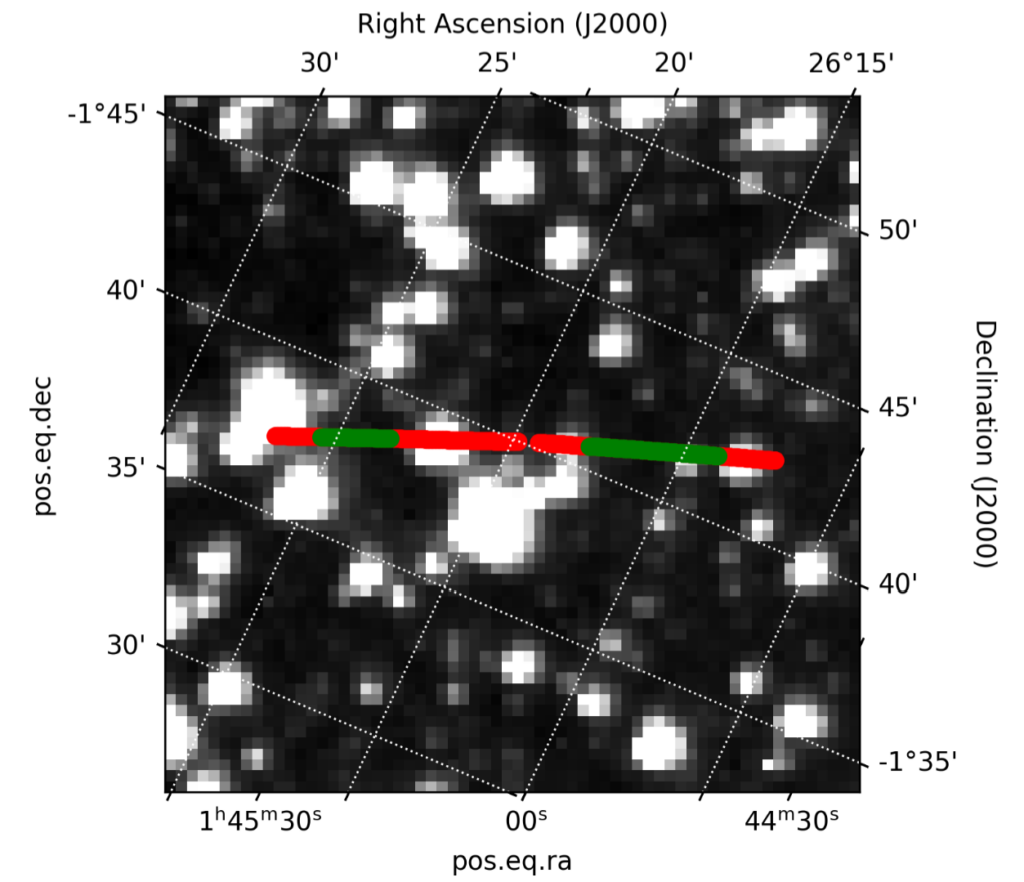
To supplement the Gaia data, which was sparsely sampled over a long baseline, and TESS data, which was densely sampled over a short baseline, the team also took observations with four ground based telescopes with different filters. They combined constraints from all three datasets to arrive at their final measurements.
Choreographed, not Coincidence
Although the technical achievement of measuring such a long-period signal is impressive, the most interesting part of this study is not the author’s methods, but the implication of their finding. 15.8 days is a very special value in the context of the Eris-Dysnomia system: it also happens to be very, very close to the time it takes Dysnomia to circle her mother. So, if Eris also spins at the same rate, the two must be tidally locked: the same face of each sphere always faces the partner.
This tendency of pairs in the solar system to pay constant attention to each other is well documented. Pluto and its moon Charon never turn their backs on one another, and other systems are half as devoted: Jupiter’s moons always face Jove, and our own moon always faces Earth, even as we distractedly whir around faster.
As with much else, physics is to blame for this behavior. As moons circle their hosts, each object is squished slightly due to tidal forces. The stretching and squashing dissipates energy through friction, and given enough time, every pair will tidally lock to minimize energy losses. The key here is that the relative sizes and material properties of both objects determine how long this synchronization takes.
So, since we can now say that Eris and Dysnomia really are synchronized, we can say something about the mass and material properties of Dysnomia. Although their analysis is preliminary, the author’s simple tidal evolution model suggests that if Dysnomia has a similar structure to other outer solar system objects, it must be about 2% the mass of Eris. That would make it one of the larger known Trans-Neptunian Objects: a pretty cool result from measuring just the spin of this outer dwarf planet.
Astrobite edited by: Maryum Sayeed
Featured image credit: NASA, ESA, and M. Brown (California Institute of Technology); CC BY 4.0

